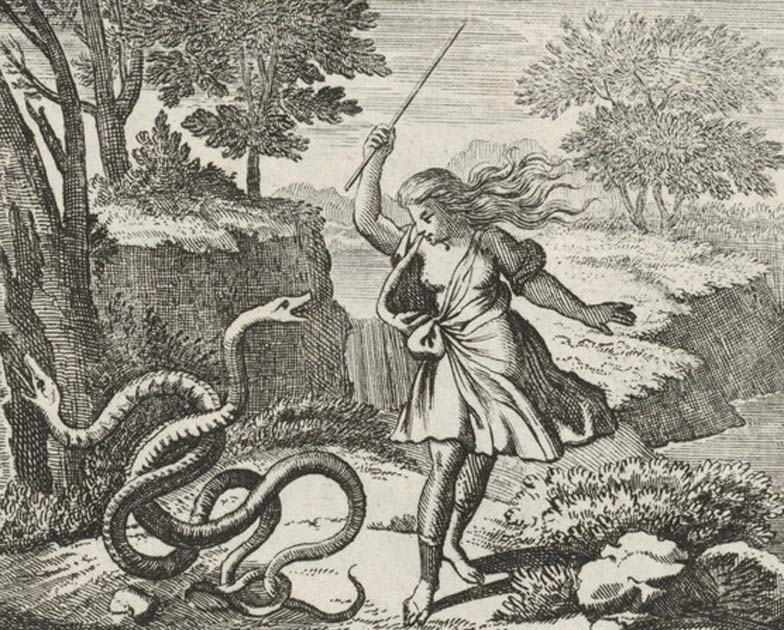
Tiresias, Blinded by the Gods and Blessed with Second Sight
According to Greek mythology, Tiresias, the blind prophet of Apollo, was well-known as much for his clairvoyance as for being transformed into a woman for seven years. He was present for seven generations in Thebes - beginning as advisor to Cadmus, the founder and first king of Thebes, all the way to the tragic unfolding of events surrounding the divine hero King Laius and his son Oedipus. Tiresias died soon after the expedition of the Seven Against Thebes in which Polynices, son of Oedipus, and six allies attacked Thebes because his brother, Eteocles, refused to give up the throne. Pliny the Elder even credits Tiresias with the invention of augury.

The Greek mythological prophet Tiresias is transformed into a woman by the goddess Hera, after striking two copulating snakes with a stick. Engraving taken from Die Verwandlungen des Ovidii: in zweyhundert und sechs- und zwantzig Kupffern (The metamorphoses of Ovid) by Johann Ulrich Krauss, circa 1690. (Public Domain)
Presented in some depictions as a man, while others as a woman, still having his sight in some and blind in others, Tiresias is presented as a complexly transitional figure, mediating between humankind and the gods, male and female, blind and seeing, present and future, this world and the underworld. Tiresias’ methods of prophecy varied. He would either receive visions or rely on his understanding of the language of birds and could divine the future from indications in fire. However, Tiresias relied the most on his ability to communicate with the dead, sometimes even menacing them when they were late to attend him.
How Tiresias Lost His Sight and became a Woman
There are two main myths that are commonly associated with Tiresias - both of which relate to alterations to his physical being that would shape his prophetic future.

Woodcut illustration of Manto, daughter of Tiresias, by Heinrich Steinhöwel of Giovanni Boccaccio's De mulieribus claris, printed by Johannes Zainer at Ulm ca. 1474 (CC BY-SA, 2.0)
When Tiresias was a young man, he came across two snakes mating on Mount Cyllene. He struck the snakes and killed them. Hera, the goddess of marriage, punished him for this action and turned him into a woman. In her seven years as a woman, Tiresias served as a priestess for Hera. Adapting to a new gender, Tiresias even married and had children. Her children included a girl named Manto, who also possessed the gift of prophecy and was brought to Delphi to be dedicated to Apollo (the very god served by the male Tiresias) many years later as a spoil during the War of the Epigoni, the second Theban war, in which the Epigoni, sons of the Argive heroes who had fought and been killed in the first Theban war, avenged the death of their fathers and attacked Thebes.
After seven years living as a woman, Tiresias came across another pair of mating snakes. Remembering the action that had caused her current fate, she left the snakes alone. This reversed the curse, and Tiresias was turned into a man once more.





